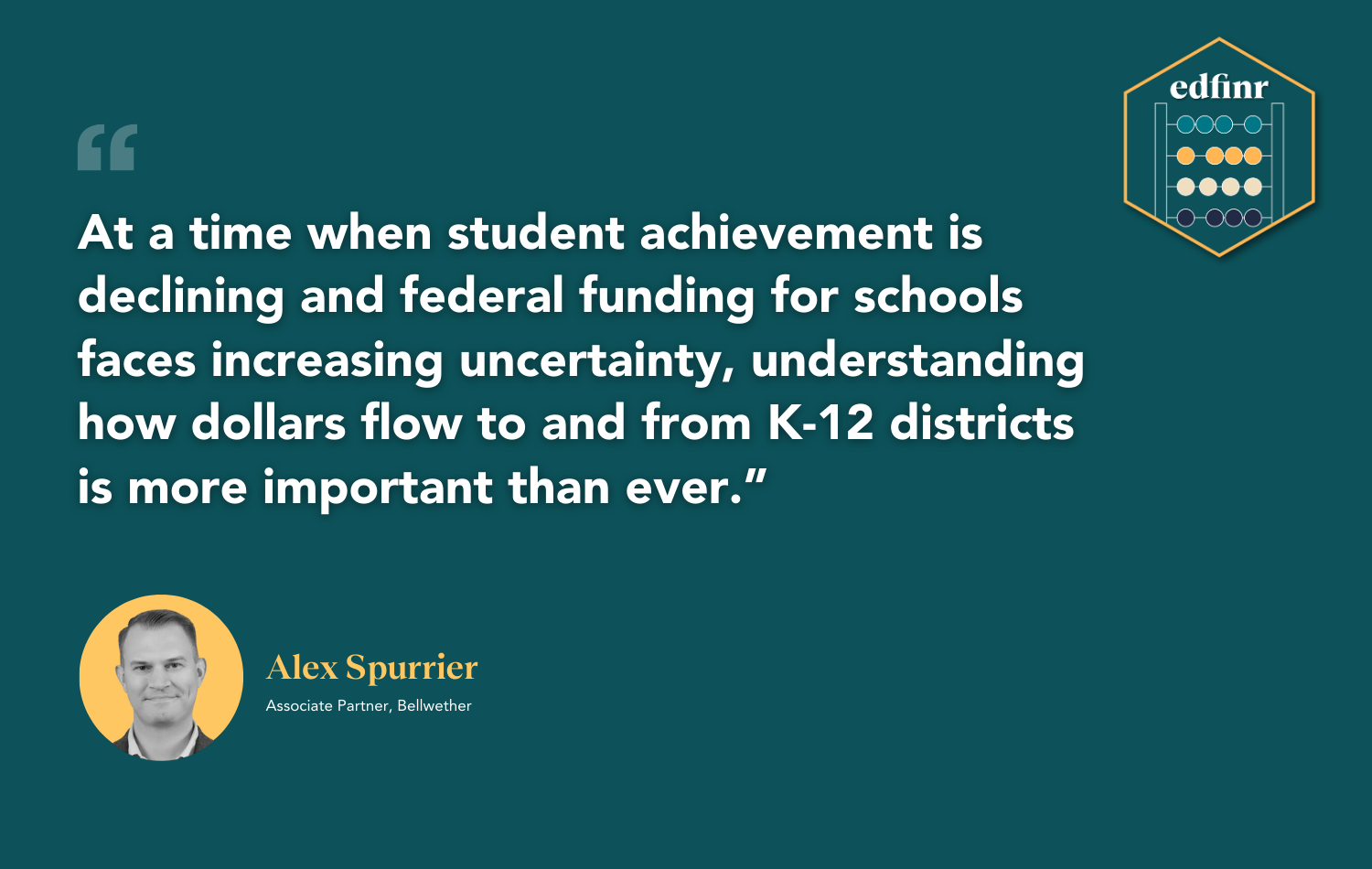School finance isn’t easy to understand. K-12 districts in the United States raise revenue from a wide range of sources, often driven by complex funding formulas. In simple terms, the bulk of funding is raised through local sources such as property taxes and state programs. Federal dollars play a smaller role in comparison, but they’re important for funding school systems’ services for English learners, students from low-income households, and those with special education needs.
However, it can be hard to find specific data on school finance — particularly on how dollars flow to and through school systems across the country. The U.S. Census Bureau administers an Annual Survey of School System Finances, or “F-33 Survey,” that provides relatively consistent and comparable data for all 50 states and the District of Columbia, but comparing how revenues or expenditures change across school years (SYs) or how those data relate to students’ socioeconomic data becomes very challenging very quickly. F-33 Survey data are available for single SYs only, so conducting any sort of longitudinal analysis or bringing in data points from other sources adds additional complexity to any school finance analysis project.
edfinr is a new tool by Bellwether that provides education researchers, analysts, and advocates with access to clean, longitudinal school finance data. The R statistical programming language is a popular open-source tool for data analysis that can be extended with bundles of code and data, or “packages.” edfinr is an R package that allows users to access F-33 Survey data from SY11-12 through SY21-22, along with demographic data from the National Center for Education Statistics Common Core of Data and other surveys from the U.S. Census Bureau.
edfinr draws from the work of EdBuild, which developed a similar R package called edbuildr, and applies insights from EdFund’s F-33 guidance and the Urban Institute. The result is a transparent tool that:
- Addresses missing data and outliers, including removing local education agencies (LEAs) with per-pupil revenue that is either extremely high or extremely low.
- Excludes special-case LEAs, such as state-operated school systems and regional service centers, which are typically funded outside of a state’s primary school funding formula.
- Allows users to apply inflation adjustments based on the Consumer Price Index (CPI).
The launch of edfinr is a step toward lowering the barriers to high-quality school finance analysis. Users can install edfinr with Posit’s pak package by running pak::pkg_install(“bellwetherorg/edfinr”) in their R console. Detailed instructions are available on the edfinr package website, including overviews of basic use, CPI adjustments, and data cleaning methodology.
At a time when student achievement is declining and federal funding for schools faces increasing uncertainty, understanding how dollars flow to and from K-12 districts is more important than ever. edfinr can help catalyze more analysis and insight into the current state of school finance, so that advocates and policymakers can change those systems to better serve all students moving forward.
The functionality and data-cleaning methodology in edfinr will evolve. If you have questions or feedback, reach out to Alex Spurrier at alex.spurrier@bellwether.org.
